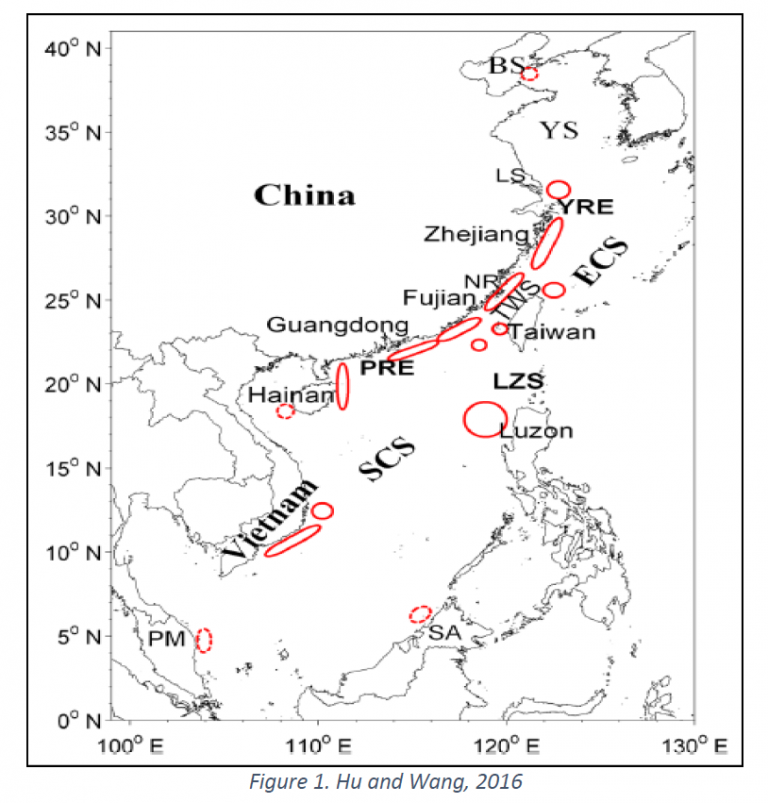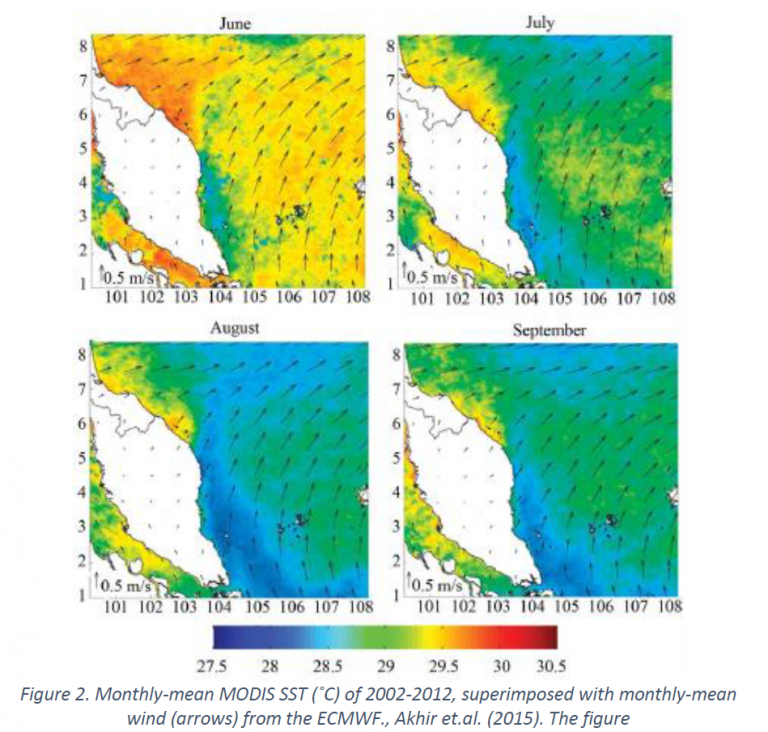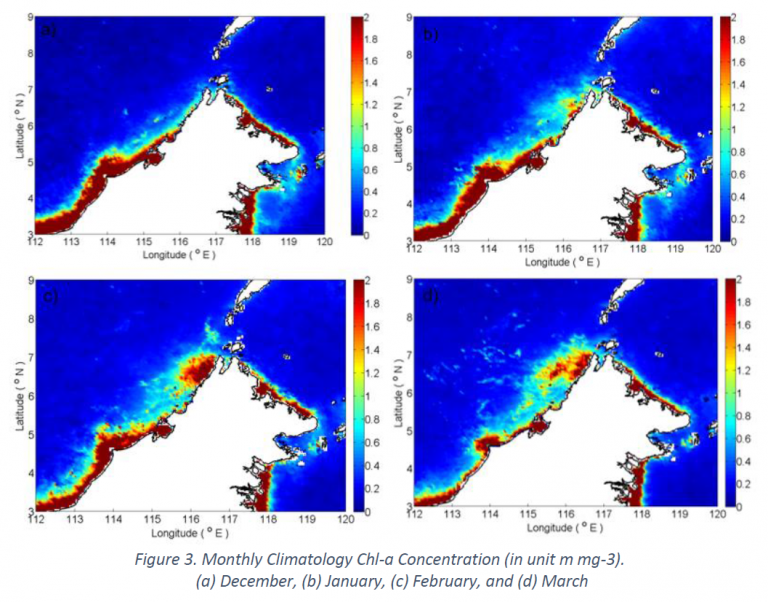ABOUT US
UPWELL GROUP – IOC WESTPAC
PROJECT NAME:
UPWELLING STUDIES THROUGH OCEAN DATA INTEGRATION TOWARDS SUSTAINING OCEAN HEALTH AND PRODUCTIVITY
Introduction
Upwelling is an oceanographic feature that is very important to the ocean ecosystem. It brings high nutrient water to the surface and the impact is noteworthy to the ocean productivity. This nutrient-rich water will encourage a phytoplankton bloom that is ultimate base for large animal’s population in the food chains, including fish, mammals and sea birds. Although this coastal upwelling region covers relatively small area of the ocean surface, they contribute roughly 50 percent of the world’s fisheries landings.
In recent years, numbers of new upwelling site are being discovered. These new discovery of upwelling site shows that our understanding on this vast ocean that surround us are still very limited. It is even more concerning when the system we are referring is very important to our food sources. A reason contributing to this deficiency is lack of scientific data that subsequently limit our understanding of the upwelling dynamics in the region. Monsoon season, shallow continental shelf and large marginal seas is one of the unique characteristics of SCS, thus a renew focus into the region will allow us to extend our understanding on this unique local setting which was poorly understood.
A regional initiative under the auspices of IOC/Westpac was formed to gather researchers within the region in an effort to increase the understanding of the physical-biological interaction dynamics of upwelling region in the SCS and surrounding seas. Through this effort, few activities were planned among regional partners which includes collaborative research that focusing on integrated data gathering which involve field data from databases, satellite data and numerical model in understanding upwelling dynamics. It is hope that the new information gathered from the study will provide new insight of the upwelling phenomena in the region.
New Upwelling site in the SCS
Unique physical settings of SCS and its surrounding seas allow many sites to become upwelling favourable during different monsoon season. Within the South China Sea basin and surrounding ocean, there are numbers of well-established sites of upwelling region, i.e. Hainan Island and Vietnam coast. Nonetheless, recent study discovered few upwelling area within SCS which never been studied before. Amongst them are the region along the east coast of Peninsular Malaysia and area north west of Borneo.
Recent study by Hu and Wang described the distribution of upwelling site within the SCS and ECS.

East Coast of Peninsular Malaysia
Upwelling off the east coast of Peninsular Malaysia (PM) was detected from recent cruise data collected during the southwest monsoon. Thermocline lifting was observed at 104˚E from a number of parallel transects. To confirm the presence of upwelling, satellite remote sensing data were used, and numerical model experiments were conducted. A cooler sea-surface temperature along the coast was spotted from both in-situ and satellite data while upward movement from the model agreed with field data. The south-westerly wind that blows along PM from June to September is believed to be the important mechanism that contributed to this upwelling through an Ekman dynamics process.

Most coastal upwelling regions are governed by classical wind-driven Ekman dynamics. In the semi-enclosed basin of the South China Sea (SCS), a number of these upwelling systems are found along the western boundary. It has been known that coastal upwelling occurs during the summer along the coast of Vietnam [1]-[3] and near Hainan Island [4] [5].With the summer monsoon being an important force in the region, south-westerly upwelling favourable wind provided the perfect setting for such features to occur. One such place is the east coast of Peninsular Malaysia (PM). Unlike the central and northern SCS, there have been very few published reports of upwelling off PM, i.e. [6] [7]. These early studies, however, covered a localized area, and the descriptions of the upwelling were brief. The available research so far are unable to draw a clear spatial coverage of upwelling presence along PM coast, which shows that the understanding of upwelling system in the region needs significant attention. Nevertheless, looking at the dynamic potential of Ekman dynamics presence during southwest monsoon, hypothetically the scale of upwelling formation along the coast can be relatively large given the length of the meridional coastline governed by PM. In this study, we found that the upwelling revealed by the in-situ data is actually only part of a larger upwelling system along the PM coast. Additionally, the southwest monsoon induces upwelling off the PM east coast, which is in accordance with the Ekman upwelling theory. Nevertheless, it is out of the study scope to conclude that this is the main or only factor influencing upwelling in the area. Most importantly, this study provides new insights regarding southwest monsoon dynamics that produce an upwelling system, which is known to be a particularly nutrient rich and high productivity process. It will best serve as the basis for future research in the area.
North-west Sabah
Another newly discovered upwelling site is the area of north-west of Sabah. Recently, a study done by Yan et al. (2015) conduct a comprehensive analysis on the upwelling event in the area and managed to provide a very good baseline information of the upwelling characteristics. The study shows the (summary)
Unpublished study from INOS, UMT shows results obtained from satellite analysis managed to show monthly variability of upwelling during the northeast monsoon. Concentration of Chl-a shown in Fig 4. …. The SST data showed significant development of upwelling from December to April. From Figure 2, cooler SST is observed to starts to appear in December and continues cooling until it reach minimum value in February, starts to rise in March, and the cooler SST almost disappear in April. The same trends been observed for Chl-a where it starts to increase in December, continues to increase until reach maximum value in February, starts to decrease in March, and almost disappear in April (Figure 3).

Conclusion
- Upwelling is important to understand the ocean productivity and health
- Enhance regional collaboration is the key to increase scientific knowledge related to upwelling dynamics
- Development of cost-effective data integration method will allow more exploration of new upwelling area in the region
References
Hu, J., and X. H. Wang (2016), Progress on upwelling studies in the China seas, Rev. Geophys., 54, 653–673, doi:10.1002/ 2015RG000505.
